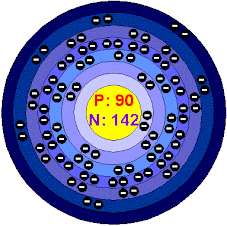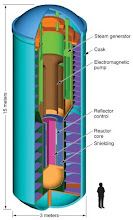You're reading about it on http://ThoriumEnergyInc.blogspot.com -- an independent informational resource about Thorium and the Rare Earth Metals (REEs).
Rare metals shortage could blunt gadget growth
That's what we would be carrying around today, if not for the rare earth metals, a group of materials with unique properties that have enabled the miniaturization of electronic components including capacitors, lasers and powerful magnets.
From computer hard drives to hybrid cars, many of today's high-tech devices rely on components made with rare earth metals to properly function. But demand for those metals is beginning to outstrip supply, forcing governments and manufacturers to find new sources of raw materials.
The rare earths are a group of 17 metals including neodymium, used in magnets, and erbium, used in lasers.
Countries such as the U.S. have long possessed their own sources for rare earth metals, but despite this they have turned for their supplies to China, where mining costs have been cheaper and environmental rules more lax. This has made China the world's largest producer of rare earth metals, mining more than 90 percent of global demand, analysts say.
China's tightening control over supplies became apparent last month when media outlets reported that it had stopped exports of rare earth metals to Japan following a diplomatic spat between the two countries.
"What China's action has done is create uncertainty," said Dudley Kingsnorth, a rare earth metals expert at the Industrial Minerals Company of Australia. "Undoubtedly people will diversify their sources of supply to reduce their reliance on China. But that can't happen overnight."
Japan, a major importer of rare earth metals, is actively exploring for new sources in Canada and Australia, as well as looking into recycling old electronic devices as a way to create new supplies of the materials.
The U.S. Congress is working on legislation, passed by the U.S. House of Representatives last week, to revitalize U.S. sources of rare earths. But China's dominance over the rare earths market will likely continue for the next two to three years, as manufacturing firms are forced to depend on limited supplies and dip into their stockpiles, Kingsnorth said.
Demand for the rare earths has long been expected to accelerate. Some projections suggest that demand could nearly double by 2015, with hybrid car engines and wind turbines big drivers behind the need.
Looking narrowly at costs, a shortfall in rare earth metal supplies might mean just a minimal price hike, or no increase at all, for the electronic gadgets that use them, analysts say. This is because many of these products only contain tiny quantities of rare earth metals.
"Something like a laptop computer probably only has got about 50 to 80 cents' worth of rare earth in it," Kingsnorth said. "Even if that tripled in price, it won't stop people from buying it." ####
Observation from Douglas Castle: Without these REEs, much of present and planned future technology would be impossible. The fact that REEs only constitute a small percentage of the price of technologies. If supplies should become inaccessible, or if the market were to become dominated by a handful of players/investors, The Rare Earth Elements would become more expensive per ounce than gold. Start thinking ahead.
Faithfully,
Douglas Castle
p.s. You should also be reading THE GLOBAL FUTURIST, at http://TheGlobalFuturist.blogspot.com
Originally published in THORIUM ENERGY AND THE RARE EARTH ELEMENTS by author Douglas Castle. Mr. Castle is the Co-Chairman and CEO of TNNWC Group, LLC, with does not have any investments or interests in Thorium or Rare Earth Elements, either as commodities, or in the form of ownership in operating companies.





